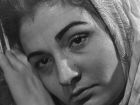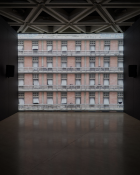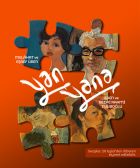Summer is here again (or so they tell me), and the İKSV Istanbul Music Festival is once again rearing its beautiful head. Here is a brief guide to what’s on offer.
The proceedings kick off with an Opening Concert at the Atatürk Cultural Centre on Thursday 1st June at 20:00 hours. When all the speechifying and prizegiving is over, there will be a performance of Chopin’s Piano Concerto No. 1 in which the young Canadian pianist Jan Lisiecki will be accompanied by the Tekfen Philharmonic Orchestra, conducted by Aziz Shokhakimov. This will be followed by a work entitled Portreler (‘Portraits’) by the contemporary Turkish composer Hasan Uçarsu, whose Sinan Operası (an opera about Sinan the Architect) was performed at the opening ceremony for the rebuilt Atatürk Cultural Centre on October 29, 2021.
The following day (Friday June 2, at 20:00 hours), the Munich Chamber Orchestra will be performing in the İş Kuleleri Salonu at the Türkiye İş Bankası headquarters in Levent. The German cellist and conductor Nicolas Altstaedt will be playing the solo part in C.P.E. Bach’s Cello Concerto in A minor and in Georgian composer Vazha Azarashvili’s alternately brooding and frenetic Cello Concerto (1978). Mr. Altstaedt will also be conducting the orchestra in Transylvanian Dances by Sándor Veress (a Swiss composer of Hungarian origin) and Béla Bartók’s Divertimento.
Here is a recording of the Azarashvili Cello Concerto in which cellist Maximilian Hornung is accompanied by an unnamed orchestra at the VivaCello Festival.
Now, Dobbantós, the fourth of the Transylvanian Dances by Sándor Veress (1907-1992), a pupil of Zoltán Kodály. It is written in a style that will be familiar to Turkish ears as it is the one that was enthusiastically imitated by Turkish composers of the 1920s, 1930s and 1940s. Note, by the way, the muddy texture towards the end: the notes the cellos and double-basses are playing grate against the tune in the violins – a feature that also plagues Bartók’s Divertimento on occasions. The following performance is by the Camerata Academica des Mozarteums Salzburg.
The first of the traditional Müzikli Bir Hafta Sonu (‘A Musical Weekend’) events, designed for families with children, will take place in Fenerbahçe Park on Saturday June 3 at 15:00 and 16:30 hours. Later that day, at 18:00 hours – once again in Fenerbahçe Park – the first of the Hafta Sonu Klasikleri (‘Weekend Classics’) concerts will feature the Spectrum Saxophone Quartet, consisting of soprano, alto, tenor and baritone saxophones, plus the Sárközy Trio (violin, double-bass and cimbalom) with pianist János Balázs.
One of the saxophonists goes by the name of ‘Daniel Đunđuš’, this being the first time I have encountered a letter ‘D’ with its stem divided by a horizontal line. It is, I believe, a feature of South Slavic languages such as Croatian, Serbian and Macedonian, as well as Vietnamese. If I am wrong about this, I humbly apologise for my ignorance.
A brief aside on the subject of the saxophone: it was invented by Adolphe Sax, a Belgian instrument maker, in the early 1840s. Saxophones proved popular with French and British military bands, and by 1856 the French Garde républicaine band included eight of them. (The instrument never gained acceptance in classical orchestras, however, although Shostakovich used it to great effect in his Jazz Suites.) The Garde républicaine was in fact one of the outfits – along with the band of the Grenadier guards from London, that of the Kaiser Franz regiment from Berlin and an ensemble from Dublin – that took part in the ‘World Peace Jubilee and International Music Festival’ of 1872, organised in Boston to celebrate the end of the Franco-Prussian War. One of the concerts put on during the course of this minimalist jamboree featured a performance of Verdi’s Il Trovatore by a 2000-strong orchestra and a 20,000-voice chorus, conducted by Johann Strauss Jr. with the help of 100 assistants. (Sounds like an impossible task to me – how on earth did they all hear each other?) On another occasion, the Fisk University Jubilee Singers, a newly-founded group from Nashville, Tennessee, gave a concert, this being the first time that African-American singers had been included in a large-scale musical production. The organisers of the ‘World Peace Jubilee’ were Patrick Gilmore, director of the 22nd Regiment National Guard Band, and Edward A. Lefebre, a Dutch saxophonist whose father had business connections with Adolphe Sax – and indeed it was Lefebre who was later responsible for publicising the sax in the United States, producing transcriptions, arrangements and original works for the instrument.
For those seeking more highbrow forms of entertainment, there is a concert by the Borusan Istanbul Philharmonic Orchestra and Canadian soprano Barbara Hannigan – who is also a conductor – in the Atatürk Cultural Centre on Saturday June 3 at 20:00 hours. The programme is an interesting mix of ancient and modern: Charles Ives’s The Unanswered Question, Haydn’s Symphony No. 96, Schoenberg’s Verklärte Nacht and George Gershwin’s Girl Crazy Suite. (I note that on their website, the İKSV has translated Girl Crazy as Çılgın Kız – ‘Crazy Girl’, perhaps for reasons of propriety.) In this recording, the redoubtable Ms Hannigan sings in Girl Crazy and conducts the orchestra at the same time:
I am an unabashed Charles Ives fan: I feel he is underrated, and am highly gratified to see a work by him included in this year’s İKSV Music Festival. Here is a performance of The Unanswered Question by the Northern Sinfonia, conducted by James Sinclair, with the score:
This year’s Müzik Rotası (‘Music Route’) is to take place on Sunday June 4 in Balat, beside the Golden Horn. The venues are Özel Fener Rum Ortaokulu ve Lisesi (a private Greek school renowned for its red-brick neo-Byzantine architecture, its pepper-pot tower and the remarkable views of Istanbul’s Old City that one gets from its terrace), Sveti Stefan Bulgar Kilisesi, the iron-built Bulgarian Church of St Stephen close to the waterside between Fener and Balat, and Aya Dimitri Rum Ortodoks Kilisesi, the Church of St Demetrios between Balat and Ayvansaray. Performances in these venues will be given at various times during the day by the Duo Ciampa-Piccotti (consisting of guitarist Gian Marco Ciampa and cellist Erica Piccotti), by harpist Güneş Hızlılar – it is pleasing to note, by the way, how many fine Turkish harpists have appeared in recent years – and by the Spectrum Saxophone Quartet and the Sárközy Trio (for these last two groups, see above).
Architecture note: the Greek school in Fener, where I once shared a cup of Greek coffee with the English teachers, was designed by Konstantinos Dimadis, an alumnus of this institution who also built the Arap İzzet Paşa Villa (known alternatively as the ‘Blacque Bey’, ‘İlyasko’ or ‘Sivastopol’ Villa) on Büyükada – the house that was occupied from 1929 to 1933 by Leon Trotsky. (He was very happy there, and devoted his time to writing My Life, The Permanent Revolution and History of the Russian Revolution.) The Bulgarian Church of St Stephen, meanwhile, is a genuine rarity, being the world’s first iron-built ‘prefabricated’ church. It was manufactured piece by piece in Vienna and then shipped via the Danube and the Black Sea to the Golden Horn, where the various components were assembled. Opened with pomp and ceremony in 1898, it was designed by the Ottoman-Armenian architect Hovsep Aznavur, who also created two celebrated Art Nouveau structures in Beyoğlu: Aznavur Pasajı (1893) in Galatasaray and the nearby Mısır Apartmanı (1910), built for the Egyptian Khedival family. As for the Church of St Demetrios, although the present structure dates mostly from 1730, its predecessor served as Greek Orthodox Patriarchal Church from 1597 to 1601. This building, of which very little is visible from nearby Kırkambar Sokak, also goes by the somewhat intriguing name of the ‘Church of St Demetrios Kanabu’ (this latter word being spelt ‘Kanavis’ or ‘Kanabos’ in some sources).
The ‘Music Route’ concludes (at 6 pm) with a recital by the Sárközy Trio in Akşemsettin Park, north of the Bulgarian Church and close by yet another fascinating building: the ecclesiastical embassy (metochion) of St Catherine’s Monastery in Sinai, built in 1686 and known in Turkish as Tur-ı Sina Manastırı. Within the same complex, which is currently under the supervision of the Greek Orthodox Patriarchate in Fener, are a Church of St John the Baptist, a library and a priest’s house.
But to return to the matter, or rather the concerts, in hand: the evening of Sunday June 4 will also see (at 9 pm) a performance of Turkish classical music of the Republican era entitled Avludaki Ses (‘The Sound, or Voice, in the Courtyard’). On stage will be the Anatolia Ensemble, who play traditional instruments such as the kemençe (a kind of violin), the kanun (a Turkish-style zither) and the ud (i.e., the ‘oud’ – the instrument from which we get the word ‘lute’, a corruption of the Arabic el oud), with a cello supplying the bass line. The venue: the Mevlanakapı Land Walls Visitors’ Centre (Mevlanakapı Kara Surları Ziyaretçi Merkezi), housed in a former Ottoman police station. The Mevlanakapı quarter is situated beside 10. Yıl Caddesi, the road between Topkapı – the gate on the land walls, not the palace – and Yedikule, the starting point of these walls on the coast of the Sea of Marmara; the Mevlana Gate still has its Byzantine inscription above it.
This is still one of my favourite areas of Istanbul, despite the recent construction of luxury housing on the site of the market gardens (bostan) that once produced exceptionally fine lettuces, and that made the inward side of the land walls such a non-urbanised treat to wander through. The Land Walls Visitors’ Centre is definitely on my list of must-see places for the summer, being not only conveniently close to the mystical mosque-and-dervish-lodge complex built in 1514 for the dervish sheikh Merkez Efendi (as well as to a selection of köfte restaurants) but also within walking distance of the Zeytinburnu Garden of Medicinal Plants, a highly recommended horticultural mini-paradise. Here are links to the websites – both of which are in Turkish – of (firstly) the Land Walls Visitors’ Centre, and (secondly) the Garden of Medicinal Plants:
https://ataturkkitapligi.ibb.gov.tr/tr/Kitaplik/Muzelerimiz/IBB-Mevlanakapi-Karakolu-Ziyaretci-Merkezi/5
https://ztbb.org
The following day, Monday June 5 (at 20:00 hours), Israeli pianist Omer Klein and German percussionist Alexej Gerassimez will be performing on the Atik Paşa Terrace of the Four Seasons Bosphorus Hotel in Beşiktaş in an event entitled ‘Firebird à la Jazz’. The source of inspiration for this project (a synthesis of classical music and jazz) was, of course, Igor Stravinsky’s The Firebird (1910), the music for a ballet based on Russian fairy tales. For those who are unaware of this masterpiece, which brought its composer international fame, here is a recording by the Vienna Philharmonic Orchestra, conducted by Valery Gergiev. Gergiev sometimes conducts with a toothpick instead of a baton; on this occasion, he uses his bare hands. The superb quality of the orchestration may perhaps be due to the lessons the composer received from ace orchestrator Nikolai Rimsky-Korsakov from 1902 until this latter’s death in 1908.
Also on Monday June 5 (at 20:00 hours), the Borusan Quartet, whose performances are invariably rewarding, will be taking the stage at the Süreyya Opera House in Kadıköy together with 24-year-old lady trumpeter Lucienne Renaudin Vary. On the programme are works by Astor Piazzolla and Alberto Ginastera, a trumpet concerto by the 18th-century Czech composer Johann Baptist Georg Neruda, Erik Satie’s Gymnopédie No. 1, and three works by Dvořák – including the melodious Songs My Mother Taught Me. This last work is performed in the old (and from my point of view, deliciously crackly) recording below by the Norwegian singer Kirsten Flagstad (1895-1962), the leading Wagnerian soprano of her age; she is described in the New Grove Dictionary of Opera as being unsurpassed in ‘sheer beauty and consistency of line and tone’.
Tuesday, June 6 will see a concert at the Atatürk Cultural Centre (starting time: 20:00 hours) in which well-established virtuoso pianist Gülsin Onay and violinist Hande Küden (a member of the Berlin Philharmonic Orchestra) will be the guest performers in a concert by the Dr. Nejat F. Eczacıbaşı Foundation’s ‘Stars of Music’ Chamber Orchestra, an institution that since 1987 has supported around 200 young musicians by means of scholarships that enable them to receive training abroad. The first two items will be Elgar’s Serenade for Strings and Vivaldi’s Concerto for Two Cellos in G minor. The Serenade for Strings (1892) is an early work, written at a time when the composer was still largely unknown; when he attempted to find a publisher for it, his request was turned down on the grounds that ‘this class of music is practically unsaleable’. The Vivaldi Concerto for Two Cellos, meanwhile, has been described (by Timothy Judd on the ‘Listeners’ Club’ website) as inhabiting ‘a magical, veiled world of nocturnal shadows’. The rest of the programme consists entirely of works by J.S. Bach, including his Concerto for Four Pianos.
Here is a recording of Elgar’s ‘unsaleable’ Serenade for Strings, played by the Academy of St Martin in the Fields.
The following day (Wednesday, June 7) at 8 pm there will be a concert entitled Fransız Rüzgârları (‘French Winds’) at the Fransız Sarayı (‘French Palace’), the French Consulate and Ambassadorial Residence in Beyoğlu. I went to a concert there during last year’s İKSV Festival, and feel the need to give intended attendees (horrible word combination, that) some advice: although there is an entrance to this diplomatic complex in Nuru Ziya Sokak, the side street that leaves İstiklal Caddesi opposite the Odakule building, last June concert-goers were redirected from there to an alternative entrance in Tomtom Kaptan Sokak. In order to find this street, you will need to follow Boğazkesen Yokuşu (‘Throat-Cutting Rise’), which leads from Tophane towards Galatasaray and becomes ‘Yeni Çarşı Caddesi’ during the (sometimes very steep) ascent to its upper end, where it follows the wall of Galatasaray Lycée. Tomtom Kaptan Sokak turns off Boğazkesen Yokuşu by the side of the Tomtom Kaptan Mosque; it is in this street that the Italian Lycée and Italian Consulate-General are situated.
The performers on June 7 will be Les Vents Français, an ensemble consisting of flute, oboe, clarinet, bassoon and French horn, plus pianist Éric Le Sage. The first item on the menu is Jacques Ibert’s Trois pièces brèves (‘Three Short Pieces’, 1930) for wind quintet. In his programme notes on the New York Philharmonic website, James M. Keller describes Ibert as ‘the quintessence of the Parisian composer in the early- to mid-20th century: cultivated but not pompous, technically adept but self-effacing, blending the ‘serious’ with the ‘popular,’ typically good-spirited and often witty.’ I agree – Trois pièces brèves is a fun work. Here is a link to the full version of those excellent programme notes:
https://nyphil.org/~/media/pdfs/program-notes/1819/Ibert-Trois-pieces-breves-Three-short-pieces.pdf
This will be followed by Beethoven’s Variations on Là ci darem la mano, Mozart’s Quintet in E flat major for Piano and Winds (K 452, a piece described by the composer shortly after the first performance as ‘the best thing I have written in my life’), an arrangement of Ravel’s Le tombeau de Couperin (1914-1917), Saint-Saëns’ Tarantelle in A minor (1857) and Francis Poulenc’s Sextet for Wind Quintet and Piano in C major (1932, revised 1939). In his programme notes on the ‘AllMusic’ website, Brian Wise tells us that the Poulenc Sextet ‘exudes French wit as well as a degree of emotional depth’, declaring that the piece ‘offers a mix of elegant, deceptively simple motives, rhythmic vitality and playful harmonic turns in a virtuosic framework.’ Saint-Saëns’ Tarantelle, meanwhile, is the subject of an interesting anecdote, described in John Henken’s notes on the ‘LA Phil’ website (link below), that illustrates Rossini’s kindness and sensitivity. Tarantula bites – rumoured to be cured by the simple expedient of dancing a tarantella – will, I am sure, be optional at the Fransız Sarayı.
https://www.laphil.com/musicdb/pieces/6143/tarantelle-in-a-minor-for-flute-clarinet-and-piano-op-6
Fazıl Say and Serenad Bağcan will be presenting their new project – Dünya Anne (‘Mother Earth’) – at the Atatürk Cultural Centre on Thursday, June 8 at 8 pm, and again on Wednesday, June 14 at the Cemil Topuzlu Open-Air Theatre in Harbiye, this time at 9 pm. The project, which was commissioned by the İKSV and is to be heard for the first time during the Festival, highlights the work of Turkish woman poets of the 20th and 21st centuries.
On Friday June 9 (at the Cemal Reşit Rey Concert Hall in Harbiye – starting time 8pm), the Concertgebouw Chamber Orchestra from Holland is to accompany German baritone Matthias Goerne in a programme consisting mostly of lieder; featured are works by György Ligeti, Schubert, Hugo Wolf, Dvořák, Robert Schumann, Clara Schumann and Brahms. Goerne has been described by the Chicago Tribune as ‘today’s leading interpreter of German art songs’; his teachers included such famous names as Dietrich Fischer-Dieskau and Elisabeth Schwarzkopf.
As a taster, here is Mr. Groene in a recital of lieder by Schubert; he is accompanied by the Netherlands Radio Philharmonic Orchestra (Radio Filharmonisch Orkest) conducted by Jaap van Zweden. The intensely dramatic Erlkönig (‘The Erlking’), a setting of a poem by Goethe in which a boy riding behind his father is pursued by a supernatural creature, begins at 24:40 – after the singer has wiped his face and had a drink of water in anticipation of the forthcoming ordeal; this is not, in any sense, an easy piece to perform. (The repeated octaves in the piano accompaniment for the voice-and-piano version are an agonising test of wrist stamina, as I well know.)
The Wikipedia entry for this famous song, which Schubert is claimed to have written in a few hours one afternoon when he was 18 years old, gives a full account of each phase of the drama.
https://en.wikipedia.org/wiki/Erlk%C3%B6nig_(Schubert)
The second and third of the ‘A Musical Weekend’ (Müzikli Bir Hafta Sonu) events, at which children will get to play percussion instruments (Yippee!), are due to take place on Saturday 10th and Sunday 11th June at İKSV Alt Kat (‘İKSV Lower Floor’), located in the İKSV’s Nejat Eczacıbaşı building in Şişhane. Then, on Sunday 11th June, a concert by budding lady musicians entitled Yarının Kadın Yıldızları (‘Female Stars of Tomorrow’) will be given at the Süreyya Opera House in Kadıköy. Time: 20:00 hours. The following day – Monday 12th June at 8 pm – an American string quartet by the name of ‘Brooklyn Rider’ will perform with Israeli mandolin-player Avi Avital at the Rahmi M. Koç Museum in Hasköy (on the other side of the Golden Horn from Balat). Lashings of titillating tinkliness are to be anticipated, but I do not mean this in any demeaning way: as an instrument, the mandolin is not to be sneezed at, and is quite capable of holding its own.
Yet another internationally-famous musician – German violinist and conductor Anne-Sophie Mutter – will be performing with her ‘Mutter’s Virtuosi’ at the Atatürk Cultural Centre on Tuesday June 13 at 8 pm. On the menu are works by Vivaldi (the Concerto for Three Violins in F major), J.S. Bach (his Violin Concerto in A minor, BWV 1041 plus his Brandenburg Concerto No. 3, BWV 1048) and André Previn (his Nonet for Two String Quartets and Double-Bass, composed in 2014 especially for the Mutter Virtuosi). The programme notes for the Nonet on the ‘WiseMusicClassical’ website (author unnamed) have this to say:
‘The quartets play together and play off each other. Soloists from each do likewise while the bass acts as the anchor and interlocutor between the others. Written with great intuitiveness for strings, at times it brings to mind late Shostakovich in the very best way, especially in its second movement, which is somber, serene, piquant and beautiful all at the same time.’
The last item in the ‘Mutter’s Virtuosi’ concert is to be the Violin Concerto Opus 5, No. 2 by Joseph Bologne de Saint-George (1745-1799). Remarkably, this gentleman – a French champion fencer, violinist and composer – was black. Wikipedia describes his life story as follows:
‘A Creole free man of colour, he was the earliest European musician/composer of African descent to receive widespread critical acclaim. He published numerous string quartets, sonatas, symphonies and stage works (opéra comique). Saint-George was born in the then-French colony of Guadeloupe, the son of wealthy, married planter Georges de Bologne Saint-George and an enslaved Senegalese African woman named Nanon. At the age of seven he was taken to France for his education; from the age of thirteen he trained in horse riding, fencing and dancing. Two years later, he beat the strongest fencer and was appointed ‘gendarme de la garde’ by King Louis XVI.’
Here is a trailer for Chevalier (2022), a film directed by Stephen Williams; it is based on the life of Saint-George, who is played by Kelvin Harrison Jr.
The last concert featuring a foreign soloist is to take place at the Atatürk Cultural Centre on Friday 16th June at 8 pm, when German violinist Arabella Steinbacher and the Salzburg Mozarteum Orchestra (conducted by Matthew Halls) will be presenting an all-Mozart programme consisting of his Serenade No. 13 (K 525), his Violin Concerto No. 4 (K 218) and his Symphony No. 29 (K 201). The symphony is an early work, described by influential British musicologist and The Times music critic Stanley Sadie (1930-2005) as ‘a landmark ... personal in tone, indeed perhaps more individual in its combination of an intimate, chamber music style with a still fiery and impulsive manner.’ Sadie, by the way, was responsible for producing some fine reference works, including the New Grove Dictionary of Music and Musicians, the New Grove Dictionary of Musical Instruments, the New Grove Dictionary of American Music (with H. Wiley Hitchcock) and the previously-mentioned New Grove Dictionary of Opera.
In the following recording, Mozart’s Symphony No. 29 is played by the Berliner Philharmoniker under the baton of Claudio Abbado (1933-2014), whose facial expressions are always amusing to watch. An aside: Abbado was brought up in Milan. During the Second World War, when the city was under Nazi occupation, his mother spent time in prison for harbouring a Jewish child. Abbado himself narrowly escaped persecution when we wrote ‘Viva Bartók’ on a local wall; this caught the attention of the Gestapo, who promptly set out on a hunt for the culprit.
And so another İKSV Music Festival – hopefully not the last – will come to an end. For the privilege of attending the many excellent and enjoyable events taking place during this time, our sincere gratitude must go to the İstanbul Kültür Sanat Vakfı (‘Istanbul Foundation for Culture and the Arts’), founded by Dr. Nejat F. Eczacıbaşı in 1973, on the 50th anniversary of the inauguration of the Turkish Republic. Here is a link to the Festival programme:
https://muzik.iksv.org/tr/program
Next up: the İKSV Istanbul Jazz Festival, due to begin on July 7 – but more of that anon. Jazz, July, joyrides ... perhaps, even, high jinks! What could possibly be juicier?






